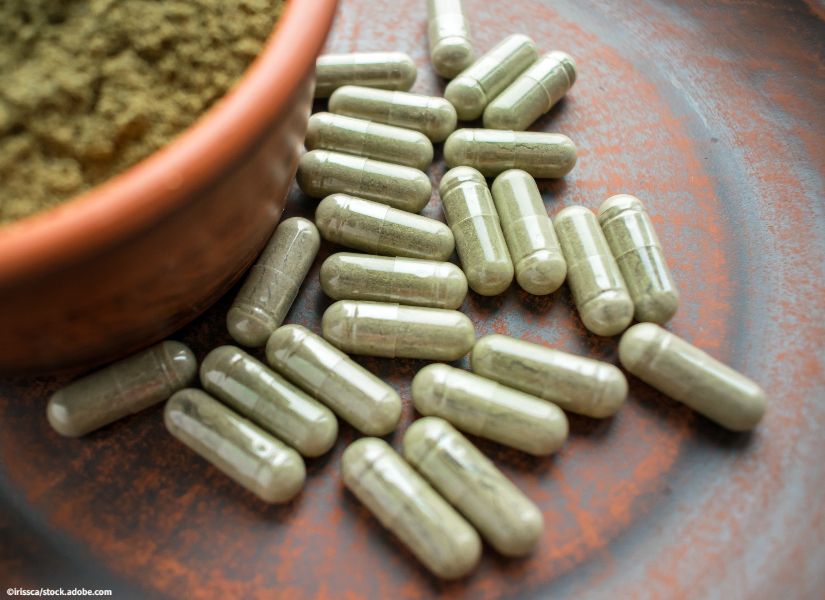- Clinical Technology
- Adult Immunization
- Hepatology
- Pediatric Immunization
- Screening
- Psychiatry
- Allergy
- Women's Health
- Cardiology
- Pediatrics
- Dermatology
- Endocrinology
- Pain Management
- Gastroenterology
- Infectious Disease
- Obesity Medicine
- Rheumatology
- Nephrology
- Neurology
- Pulmonology
New Johns Hopkins Survey Finds Kratom May Have Low Abuse Potential
Of the 41% of kratom users who reported taking it for opioid withdrawal, 35% went >1 year without taking opioids or heroin.
Researchers at Johns Hopkins say findings show the need for research and regulation, but urge against outright ban on sales for kratom.

A new survey of >2700 kratom users found that the psychoactive compound with opioid-receptor mediated effects, may have a lower rate of harm vs prescription opioids for treating pain, anxiety, depression, and addiction.
Researchers at Johns Hopkins Medicine published their findings in the February 3 issue of Drug and Alcohol Dependence.
“Although our findings show kratom to be relatively safe according to these self-reports, unregulated medicinal supplements raise concerns with respect to contamination or higher doses of the active chemicals, which could increase negative side effects and harmful responses,” said lead author Albert Garcia-Romeu, PhD, in a press release. “This is why we advocate for the FDA to regulate kratom, which would require testing for impurities and maintaining safe levels of the active chemicals.”
What exactly is kratom?
Kratom is a tropical plant related to coffee trees and grown mostly in Southeast Asia, but people in the US can easily buy it online or in smoke shops.
Kratom contains the alkaloid mitragynine which acts on the brain’s opiate receptors and alters mood. Users consume it by either eating its ground leaves in food or brewing them in tea.
In small doses, it is mainly used as an energy and mood booster in Asia where use has long been widespread. In larger doses, it is used for pain or recreationally like drinking alcohol.
According to the American Kratom Association, between 10-16 million people in the US regularly use kratom, but some reports have linked its use to hallucinations, seizures, and liver damage when combined with alcohol or other drugs.
In 2016, the US Drug Enforcement Agency announced their intent to categorize kratom as a Schedule 1 drug, but due to public and industry pushback, no action was taken.
The new survey findings, however, “suggest that kratom doesn’t belong in the category of a Schedule I drug, because there seems to be relatively low rate of abuse potential, and there may be medical applications to explore, including as a possible treatment for pain and opioid use disorder,” said Garcia-Romeu in the press release.
Is Kratom Safer than Opioids?
Garcia-Romeu and colleagues surveyed 2798 people online about their kratom use; approximately 61% were women and 90% were white. The average age of participants was 40 years and approximately 84% reported having at least some college education.
Approximately 91% of participants reported taking kratom for pain relief on average a few times a day for back, shoulder, or knee pain, and 67% reported using it for anxiety and 65% for depression.
Participants also reported using kratom to treat opioid withdrawal (41%), and 35% of those participants reported going >1 year without taking prescription opioids or heroin.
“Notably there’s been fewer than 100 kratom-related deaths reported in a comparable period, and most of these involved mixing with other drugs or in combination with preexisting health conditions,” said Garcia-Romeu in the press release.
To examine kratom’s addiction potential, participants were required to finish a Substance Use Disorder Symptom checklist to assess if their use qualified as a substance use disorder according to the American Psychiatric Association Diagnostic and Statistical Manual of Mental Disorder, 5th Edition guidelines.
Less than 3% of responses met the criteria for moderate or severe substance use disorder for abusing kratom, but approximately 13% met some criteria for kratom-related substance use disorder.
The press release did note, however, that this is comparable to about 8%-12% of people prescribed opioids who became dependent, according to statistics from the US National Institute for Drug Abuse.
Nearly 33% of participants reported having mild unpleasant side effects from kratom including constipation and upset stomach or lethargy which mostly resolved within 24 hours and 1.9% had side effects severe enough to seek medical treatment. Less than 10% of participants reported notable kratom-related withdrawal effects.
Researchers called for more rigorous clinical research to be done to test kratom’s potential therapeutic benefits, potential for behavioral intoxication, and adverse side effects to help inform government policy and regulation.
Kratom users should be cautious and not mix it with other drugs or alcohol and to talk with their physician before taking any supplements, the press release noted.
Stay in touch with Patient Care® Online:
→Subscribe to ourNewsletter →Like us on Facebook →Follow us on Twitter →Write or Blog for Patient Care® Online→Follow us on LinkedIn
